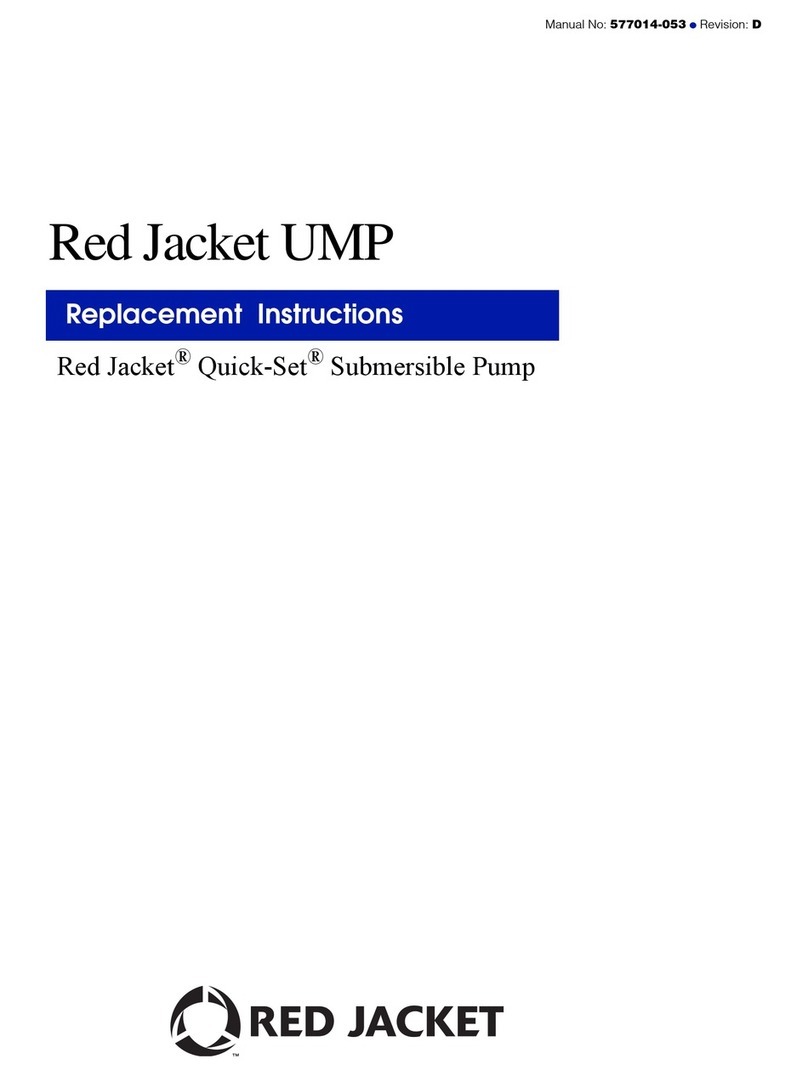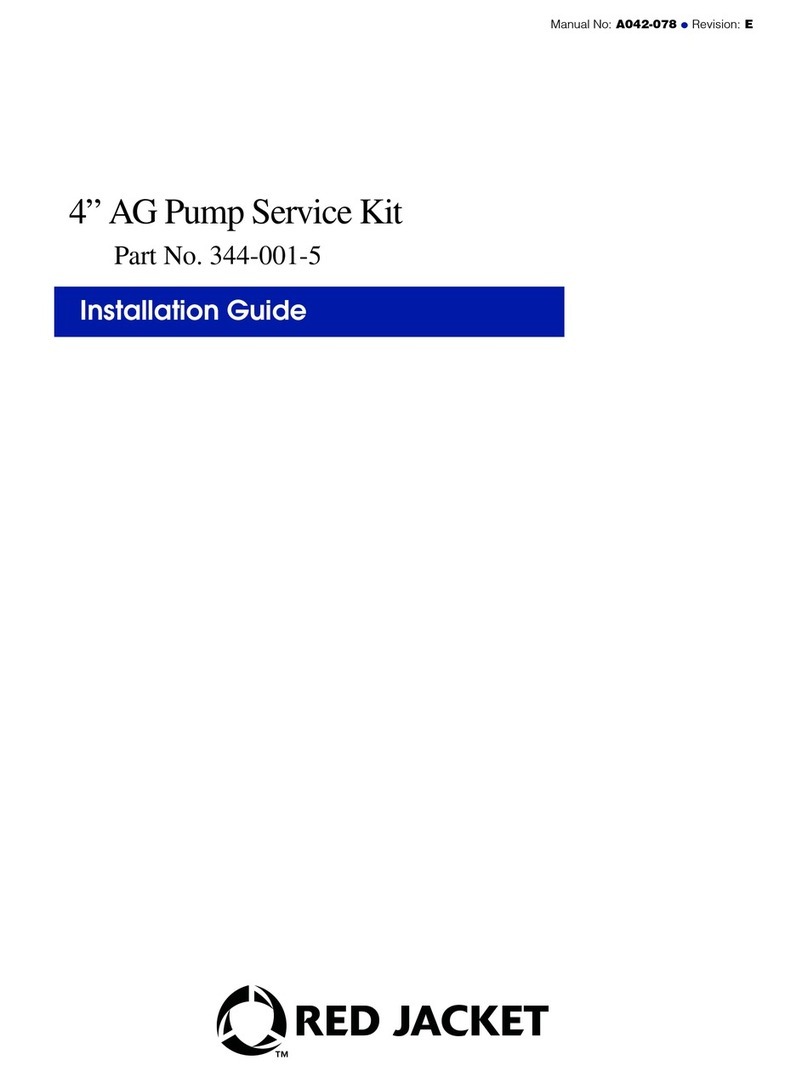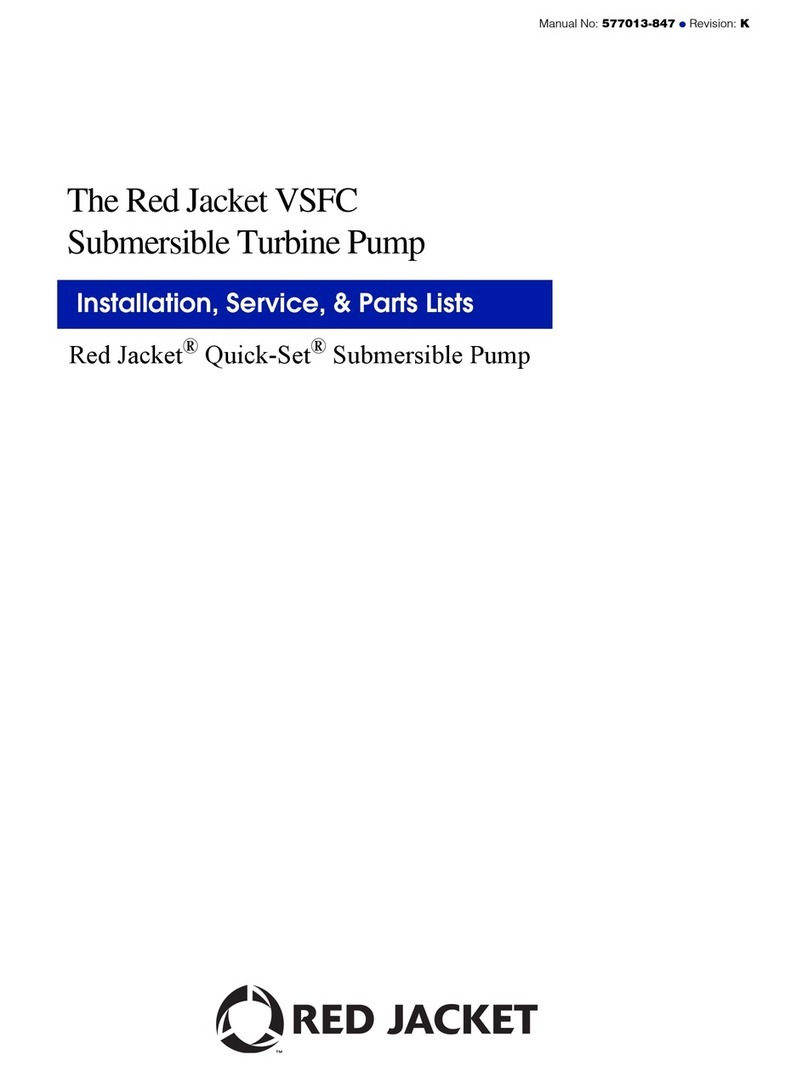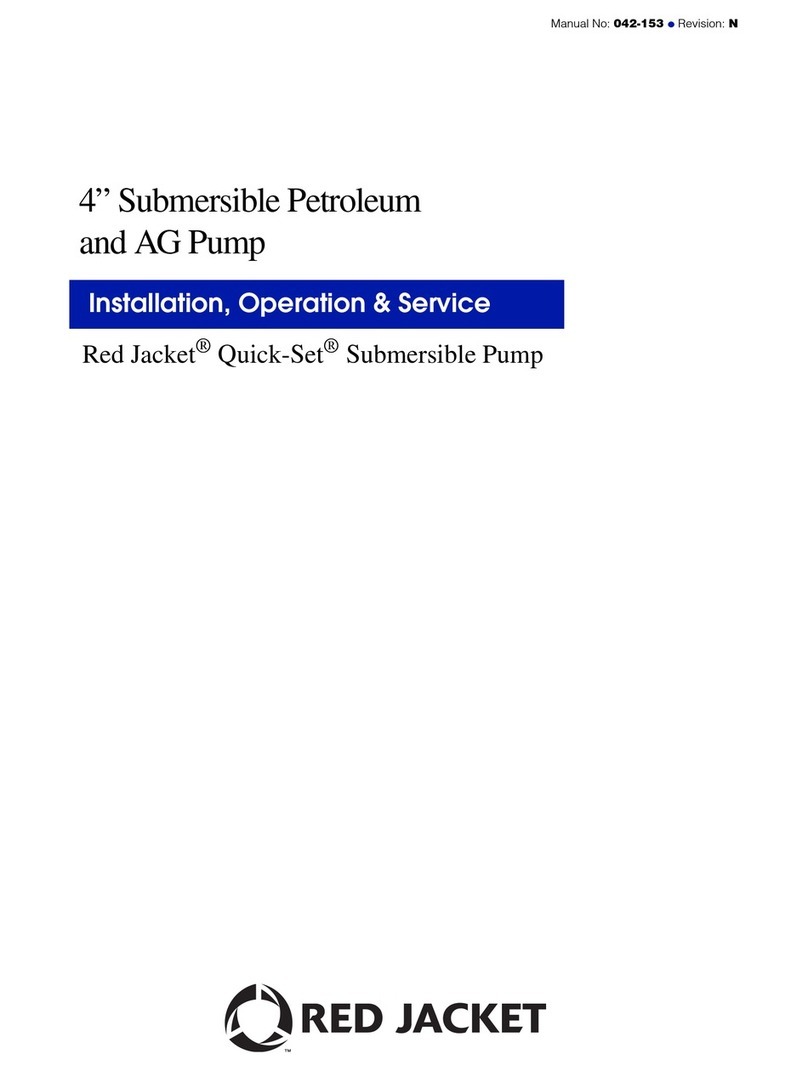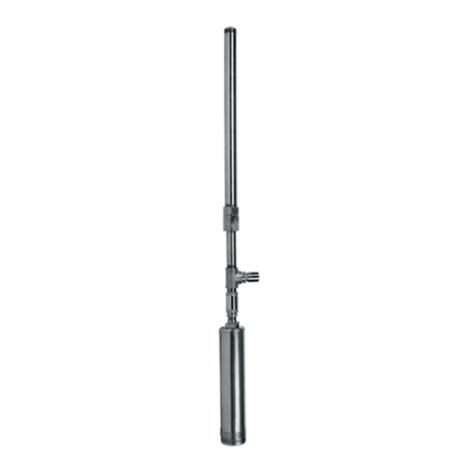
1
Introduction
Improvements and market demand have resulted in the development of the latest LPG Premier and LPG Premier
Mid-Flow and LPG Premier Hi-Flow pump-motor units for the Liquefied Petroleum Gas sector of the market place.
These new ATEX certified pump-motor units contain the latest high temperature, non-conductive engineered
materials. EC Type Examination Certificate marking is
c1180 eII 2G Ex b c db IIA T4 Gb DEMKO 13 ATEX 9990794X
The Red Jacket submersible LPG pump and motor designs have more than twenty years of proven service
throughout the world. All major oil and gas companies are using submersible technology. The pumps are used in
filling stations for bottles, automobiles, trucks and buses. In the industrial sector installations include, but are not
limited to, loading facilities, foam, aerosol and paper mills.
The Red Jacket submersible LPG pumps are electrical motor-driven centrifugal types designed for use in LPG
filling station flow metering systems. The pumps are typically installed in a separate manifold direct into the storage
vessels and are approved for use in Autogas motor fuels. Pumps can be installed in vertical and horizontal
applications. The pump has a maximum rotational speed of 3000 RPM and is to be rigidly mounted to the
electrical motor. The pumps provide positive pressure at all times to the flow meters.
The submersible LPG system installation consists of:
• A manifold including, overflow protector, shut off valve, equalization line, electrical junction box and a connection
for a vapor return, pressure gauge and a separate connection for purge valve.
• A cable conduit entry of 1/2-14 inch NPTF threads mounted within the product line (column pipe).
• A motor with internal by-pass and pump section
The electric wires from the electrical junction box to the motor run through the conduit pipe. The conduit pipe is
mounted inside the product line and is sealed against the pumped liquid. The electrical wires are mounted in a
plug (pigtail) which provides a seal into the motor. The color-coded wires are provided with a LPG (propane and
butane) resistant coating.
The pump-motor unit consists of two parts, the motor 50 Hz, 380-415 Vac (stator, rotor, electrical-connections
and bearings) and the pump (multi-stage centrifugal). Motor and pump sections are each enclosed in stainless
steel shells.
The United States Patent Office has granted patent number 6,129,529 to the pump-motor unit design.
ATEX Conditions for Safe Use:
• All submersible pump-motor units, manifolds and associated equipment shall be installed in accordance with the
manufacturer’s installation, operation and service manuals supplied and with local installation requirements.
• Drawing 410742-001 details dimensions of the flameproof joints, non-metallic materials and operating limits.
• This pump-motor unit is not intended to be repaired or adjusted. The pump and motor must be replaced as a
complete set, not individually unless prior approval from Veeder Root is received.
• All installations shall provide reliable electrical connection between the submersible LPG pump, frame, piping,
manifold or junction box and the tank structure for the electrical protection and equipotential bonding.
• The installer must supply a length of electrical conduit so that the motor conductors can be sealed and thereby
separated from the pumped fluid.
• Fasteners securing the discharge head shall be replaced only with fasteners provided in kit 144-220-5.
• Where a differential pressure switch or transducer is installed, each must be capable of ensuring that the
nominated temperature classification is not exceeded.
• Compliance with the Essential Health and Safety Requirements has been assured by compliance with:
EN 60079-0:2012+A11:2013, EN 60079-1:2014, EN 13463-1:2009, EN 13463-3:2005, EN 13463-5:2011,
EN 13463-6:2005, DEMKO 13 ATEX 9990794X.
